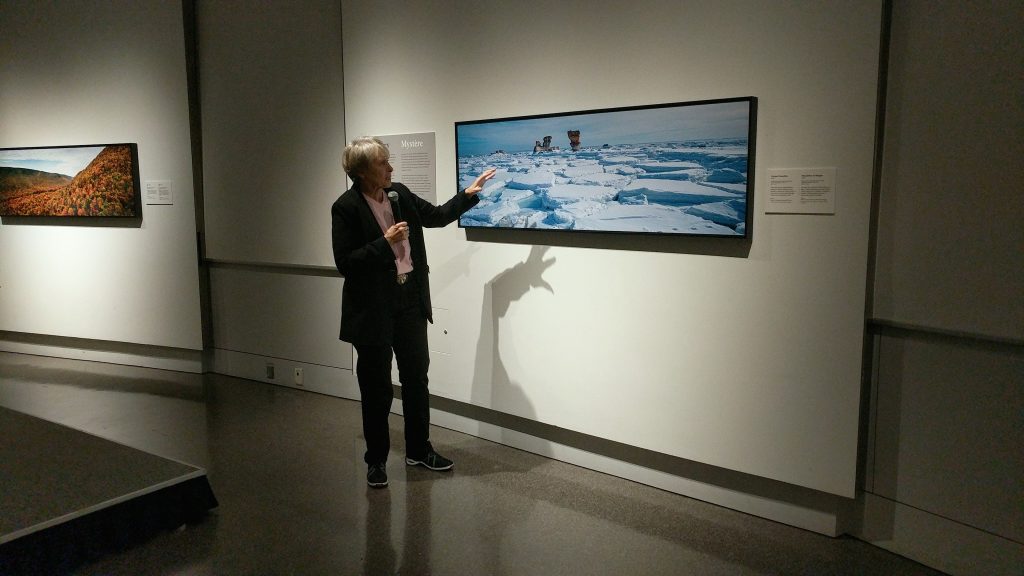Pioneering astronaut urges girls to shoot for the stars
By Gowlene Selvavijayan
Roberta Bondar, Canada’s first woman to shoot into space, inspired young girls and women to reach for the stars when she took the stage at the Canadian Museum of Nature on March 8 for International Women’s Day.
The sky was never the limit for Bondar. Also the first neurologist to explore space, she conducted more than 40 research experiments for 18 countries during her eight-day mission aboard the Space Shuttle Discovery in January 1992.
However, these milestones were not achieved without breaking more than just a sound barrier.
During her talk “Curiosity, Creativity and the Safety Net of Science,” Bondar captivated the audience with her experiences as a young woman trying to enter the field of science.
“Women weren’t accepted to do certain things, or even had the opportunity to begin with,” she said.
When she was going into Grade 13, her guidance counselor advised her not to go into math or science because she was a woman, she said.
She grew up fascinated with flight, but in a time when the Royal Canadian Air Force encouraged women to serve in the army so “that men may fly.” NASA’s space crews were male-only until 1983, when Sally Ride became the first American woman to go into space.
When chosen for the Discovery mission, Bondar was the only woman in a crew of seven. She described how the men would be swarmed by questions, but she was pushed aside and assumed to be a receptionist because she was initially made to wear “women’s clothes.” She said she never wore a skirt again.
She recalled the uniforms she had to wear during training weighing her down more than they did the men in her crew because they had more body mass than she did.
“They were looking for every reason to exclude a woman on this flight,” Bondar said. “But I didn’t let them get to me.”
Danielle Fraser, research scientist at the museum, introduced Bondar on the night of her talk as a “true Canadian trailblazer.”
“I do recall learning about her when I was a child and thinking that it was amazing she was able to get that far when women were having difficulty getting into those types of fields,” Fraser said.
Fraser said she was happy to see young girls attending the event, especially since she didn’t have many women in the sciences to look up to growing up.
Seven-year-old Makinley Gaudet came clad in her Girl Guides uniform to meet former Girl Guide Bondar, who juggled their iconic cookies in space.
Makinley said she felt empowered.
“I feel that if I learn something and there’s something that only boys can do when I grow up, I should be able to make that change and prove to the other girls that they should have a chance to do that job too,” she said.
University of Ottawa student Sejal Paudel first met Bondar after seeing her speak at her elementary school 10 years ago.
“It was right around when I was thinking about being a scientist. Seeing her really reinforced that for me,” she said.
Paudel is currently in her first year of biochemistry at the university.
Fraser said it is important that young girls get the message early.
“I hope they understand that it’s nothing about being female or identifying as female that disadvantages them. It’s society,” she said.
Before Bondar left the stage, she said that “the disruptive shift needs to come from men” doing more to welcome women into non-traditional careers.
“If we want people to come in and do science, we need to accept them equally.”
Bondar’s talk coincided with a museum exhibit featuring one of the former astronaut’s other passions: photography.
The travelling show, Light in the Land, started last year in celebration of Canada’s 150th birthday and the 25th anniversary of Bondar’s mission to space. It opened at McLeod Street museum on Jan. 13 and remains on display until March 31.
The museum describes Light in the Land, organized by the Roberta Bondar Foundation, as Earth through the astronaut’s eyes, aimed at teaching people to better appreciate the Earth and all things that inhabit it.

